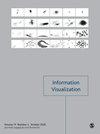STFT-LDA: An algorithm to facilitate the visual analysis of building seismic responses
IF 1.8
4区 计算机科学
Q3 COMPUTER SCIENCE, SOFTWARE ENGINEERING
引用次数: 1
Abstract
Civil engineers use numerical simulations of a building’s responses to seismic forces to understand the nature of building failures, the limitations of building codes, and how to determine the latter to prevent the former. Such simulations generate large ensembles of multivariate, multiattribute time series. Comprehensive understanding of this data requires techniques that support the multivariate nature of the time series and can compare behaviors that are both periodic and non-periodic across multiple time scales and multiple time series themselves. In this paper, we present a novel technique to extract such patterns from time series generated from simulations of seismic responses. The core of our approach is the use of topic modeling, where topics correspond to interpretable and discriminative features of the earthquakes. We transform the raw time series data into a time series of topics, and use this visual summary to compare temporal patterns in earthquakes, query earthquakes via the topics across arbitrary time scales, and enable details on demand by linking the topic visualization with the original earthquake data. We show, through a surrogate task and an expert study, that this technique allows analysts to more easily identify recurring patterns in such time series. By integrating this technique in a prototype system, we show how it enables novel forms of visual interaction.STFT-LDA:一种便于建筑物地震反应可视化分析的算法
土木工程师使用建筑物对地震力的反应的数值模拟来了解建筑物失效的性质,建筑规范的局限性,以及如何确定后者以防止前者。这样的模拟产生了多变量、多属性时间序列的大集合。对这些数据的全面理解需要支持时间序列的多变量特性的技术,并且可以跨多个时间尺度和多个时间序列本身比较周期性和非周期性的行为。在本文中,我们提出了一种从地震反应模拟产生的时间序列中提取这种模式的新技术。我们方法的核心是使用主题建模,其中主题对应于地震的可解释和判别特征。我们将原始时间序列数据转换为主题时间序列,并使用该可视化摘要来比较地震的时间模式,通过任意时间尺度的主题查询地震,并通过将主题可视化与原始地震数据联系起来,按需提供详细信息。我们通过代理任务和专家研究表明,该技术允许分析人员更容易地识别这种时间序列中的重复模式。通过将这种技术集成到原型系统中,我们展示了它如何实现新颖的视觉交互形式。
本文章由计算机程序翻译,如有差异,请以英文原文为准。
求助全文
约1分钟内获得全文
求助全文
来源期刊

Information Visualization
COMPUTER SCIENCE, SOFTWARE ENGINEERING-
CiteScore
5.40
自引率
0.00%
发文量
16
审稿时长
>12 weeks
期刊介绍:
Information Visualization is essential reading for researchers and practitioners of information visualization and is of interest to computer scientists and data analysts working on related specialisms. This journal is an international, peer-reviewed journal publishing articles on fundamental research and applications of information visualization. The journal acts as a dedicated forum for the theories, methodologies, techniques and evaluations of information visualization and its applications.
The journal is a core vehicle for developing a generic research agenda for the field by identifying and developing the unique and significant aspects of information visualization. Emphasis is placed on interdisciplinary material and on the close connection between theory and practice.
This journal is a member of the Committee on Publication Ethics (COPE).
 求助内容:
求助内容: 应助结果提醒方式:
应助结果提醒方式:


